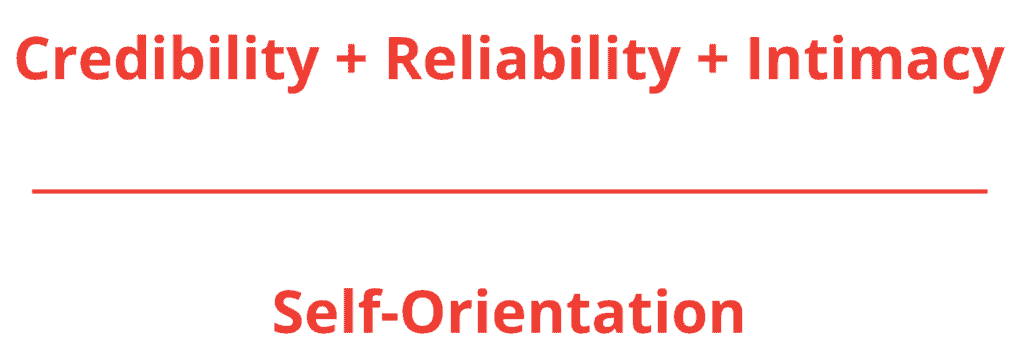If you’re in business, especially if you’re involved in hiring, you’ve probably heard a lot about the current struggle to hire. What you may not be aware of is that employee retention has become an equally huge problem for many companies, right alongside the hiring crisis.
No matter how great the pay and benefits look from the outside, if you want your employees to stick around, you have to learn what it is that makes people want to stay. Keep doing what you’re doing to get people hired if it’s working, but after that, be aware that the key to employee retention is trust.
What’s Trust Got to Do with It?
Think about the last time you were desperate to leave a job — especially if it was a job that, on paper, was a good one. What was missing? Maybe the people you worked with constantly let you down on vital project elements you needed them to do. Maybe you just felt like your employer cared a lot more about their own interests than they did about helping their people succeed. Whatever the specifics, in the end, you wanted out of that job because there was no trust there.
Trust is vital to the longevity of any employee in your company. If they don’t trust you, they won’t stay; it’s as simple as that. For that reason, it’s critical that, from day one, you are taking active steps to build trust with your employees. You’ll see your employee retention rates drastically improve as soon as you’ve built up enough trust in your organization.
Measuring Trust: The Trust Equation
Now you may be saying, “What are you talking about? We’re already an honest company that pays our people on time. How much trust is ‘enough trust’?”
In business, we love to have equations and metrics that quantify things, and we sometimes start to panic when esoteric concepts like trust enter the mix. Thankfully, Charles Green, author of The Trusted Advisor, is an expert in this sort of thing. Charles came up with an equation to measure the level of trust in an organization. It looks like this:
The equation needs a bit of explaining to make any sense, but consider how any equation works. If the value of the numerator were to increase, the output would be a larger number, and if the denominator increased, the output would be smaller. If the output of the equation is trust, we can think about it the same way. The trust value will rise as long as the value of the numerator increases or the denominator decreases; otherwise, the trust value will decrease.
What do all those values mean, exactly? Let’s take a look at each to get a better sense of how they influence trust.
Credibility
As a word, “credible” is already a synonym of “trustworthy,” but in a more specific sense this has to do with the words we speak and whether or not they can be believed. In a business sense, credibility is a measure of whether you (as either an individual or an organization) speak truthfully and knowledgeably to the absolute best of your ability in any interaction. This requires intentionally seeking to expand and verify your knowledge on any topic or process involved in your job or the job of the people you manage. It also requires backing any opinions or suggestions with solid reasoning, and—perhaps most importantly—being willing to admit when you don’t know something.
Leader Tip: If your employees see that accuracy is more important to you than your ego, they’re far more likely to trust what you say when you do know the answer. Be honest, clear, and accurate, and you’re well on your way to gaining a lot more trust.
Reliability
This is another technical synonym for “trustworthy,” but this time it relates more to action. If you’re reliable, then the people around you know that if you say you’re going to do something, it is going to get done. Reliability also means being where you’re expected to be at the times when you’re supposed to be there. We’ve all had at least one supervisor or manager who always seemed to turn up missing just as we have an important question for them. It’s frustrating, and it gets in the way of the job we’re trying to do, so an employer who we can count on is key to a smooth work day.
Leader Tip: Reliability can also extend to things like being prepared for meetings so that no time is wasted and letting your staff know immediately when you become aware of any changes that may affect their work. Being available, communicative, and consistently following through will make your employees feel a lot better about relying on you.
Intimacy
In the trust equation, intimacy strictly refers to the empathy and emotional connection needed to make work feel like a safe and comfortable place for your employees to be. This requires a willingness to get to know your employees on a personal level, including how their life situations and struggles might affect their feelings on any given day.
Leader Tip: Speaking of feelings, it’s important that your employees know their feelings are welcome and respected in your workplace. If you as an employer are willing to be open with your emotions, then it will help indicate to your employees that this is safe to do the same. If you can develop the ability to know and care about your employees on a personal level, they’ll notice and will be a lot more likely to stick around.
Self-Orientation
Now we reach the denominator of the equation, which is a little different than the others. Self-orientation refers to your focus. Are the things you do mainly to serve yourself or to help others? If you tend to think of other people in terms of what they can do for you, they’re going to notice and they’re not going to trust you. No egotist is as subtle as they think they are.
Leader Tip: The less self-oriented you are in your approach to business, the better. It’s important to remember that you can’t do this by yourself; that’s why you have employees. There’s nothing to be gained by thinking of your employees as a means to an end. Far better to find the humility to see your workforce as a team, and think about how you can help them do their jobs with less frustration. In the end this still benefits you, but it will also make you a lot easier to work with—and a lot easier to trust.
How Should I Apply This to Improve Employee Retention?
Equations are all well and good, but it’s better if they have an actual application. The application of the trust equation fully depends on the sort of person you are…
If you don’t like putting numbers on feelings like trust, then it can just stand as a philosophy to help you remember the things that are important to focus on as an employer.
If you are somebody who needs numbers to make sense of things, then you can use this equation more literally. Take a look at your current style of management and relationships with your employees and assign number values to how well you think you are doing in each category. (Be honest with yourself.) From there, you can set goals to help increase the numerator values and decrease the denominator. We can’t tell you exactly what your goals should be, but humility and common sense should be your guide as you work them out.
Trust is a process, and it takes work. But the more you focus on being a trustworthy employer, the more you’ll start to see employees make the choice to stay with your company and help it grow. Commitment to building trust is one investment that will never fail you; you can trust us on that.
If you’d like to learn more about the trust equation or about building trust in your organization for improved employee retention, you can check out Charles Green’s work here. If you’d like to learn how Narativ can help you shape your company’s onboarding process to build trust from the start, visit us here.





